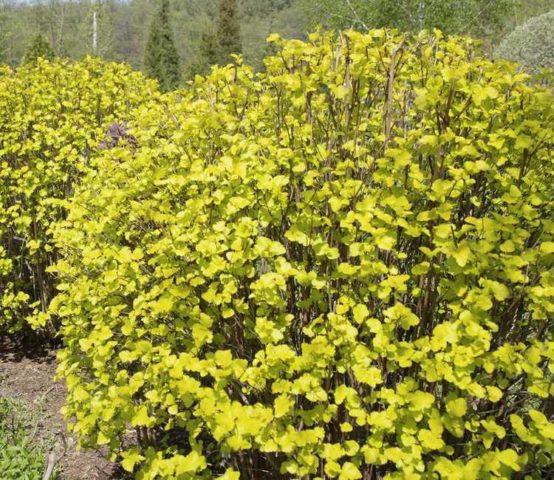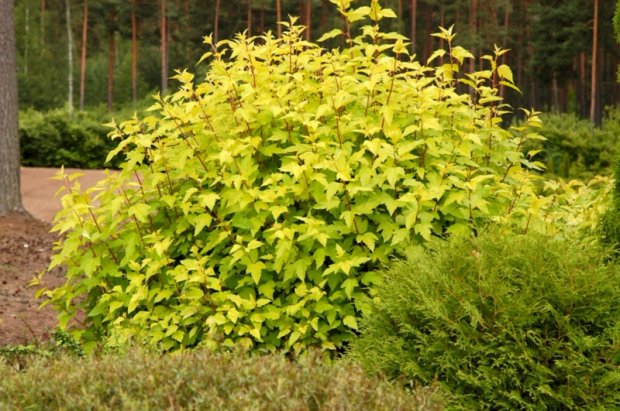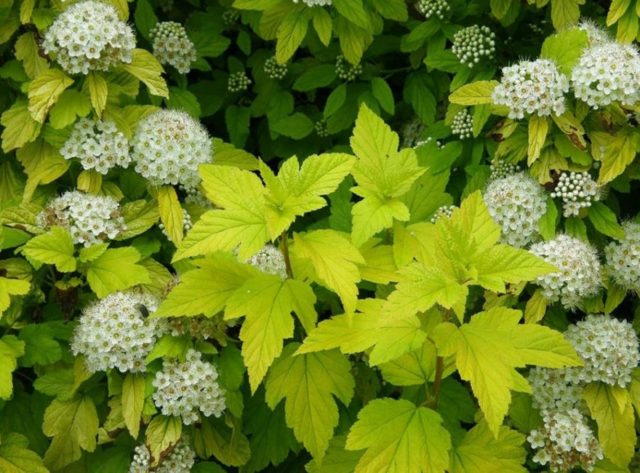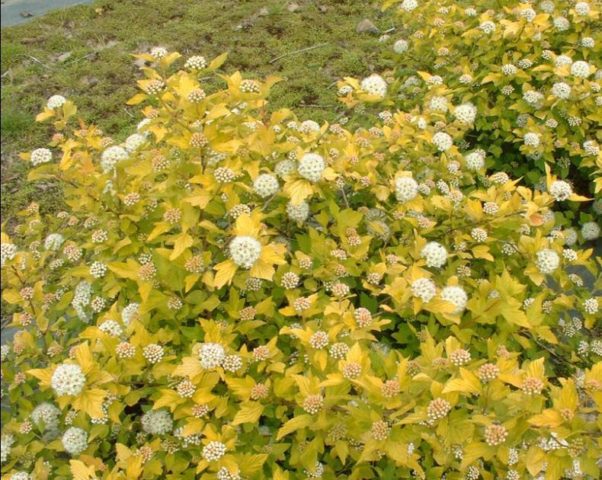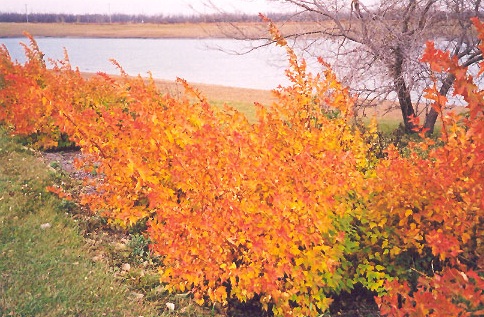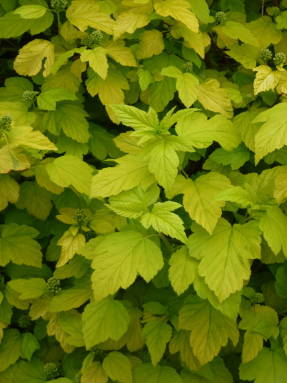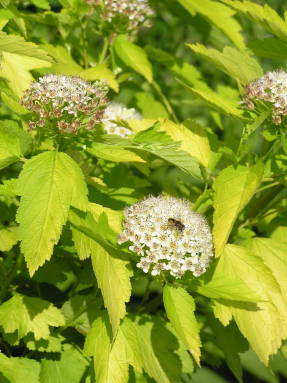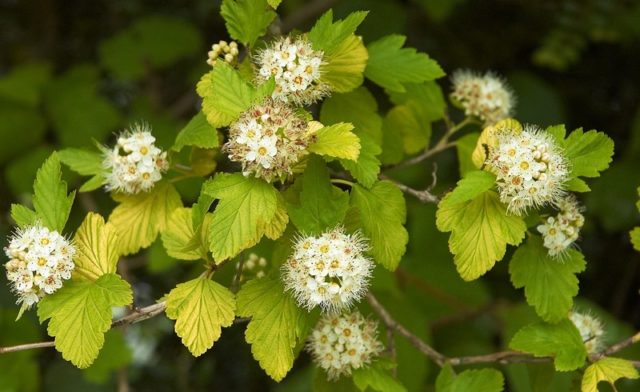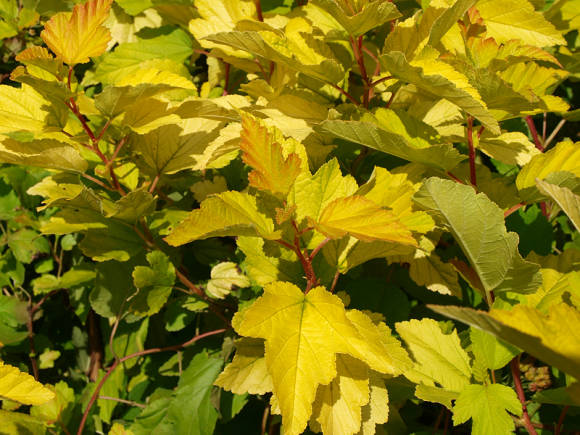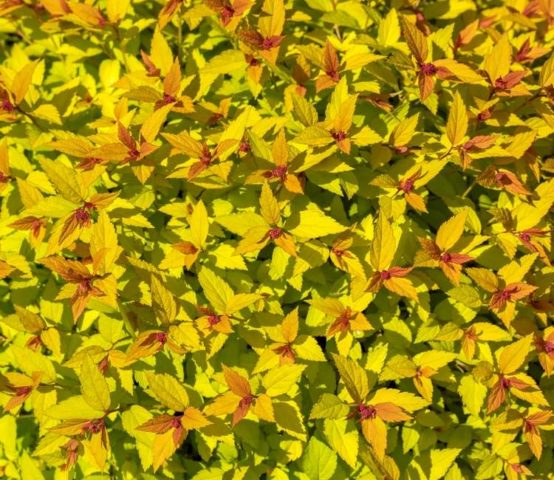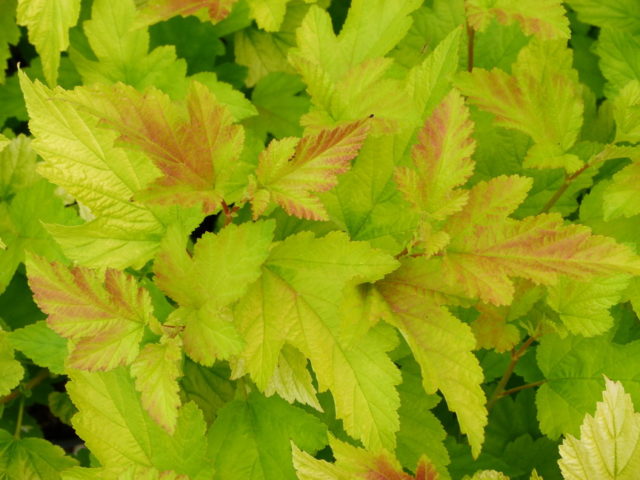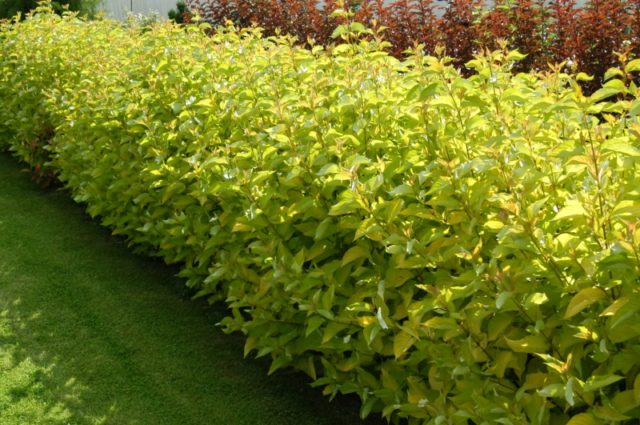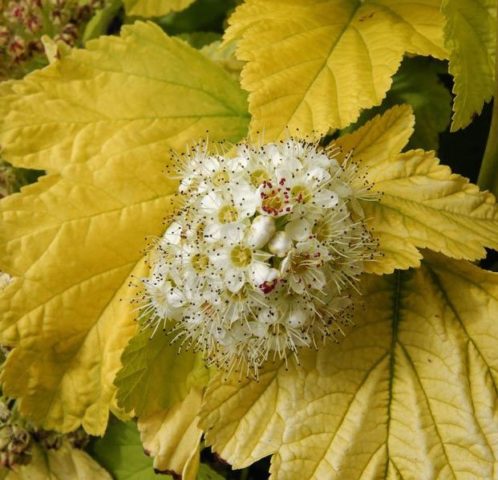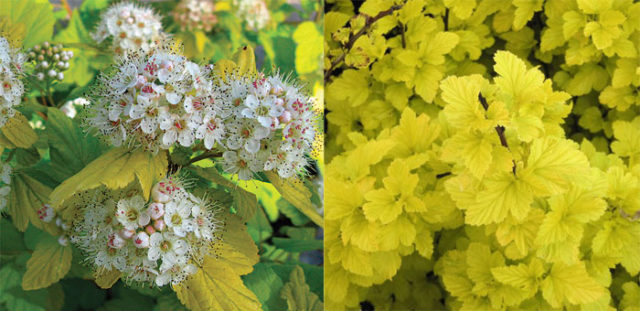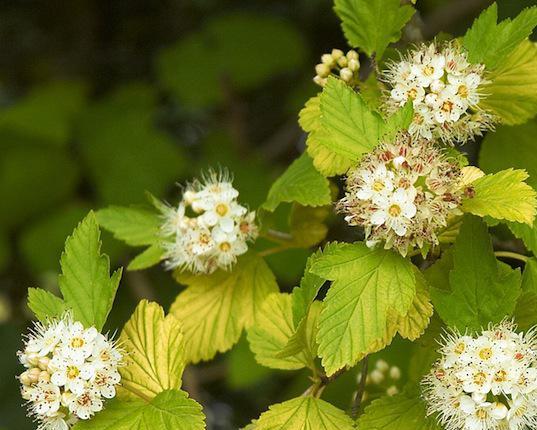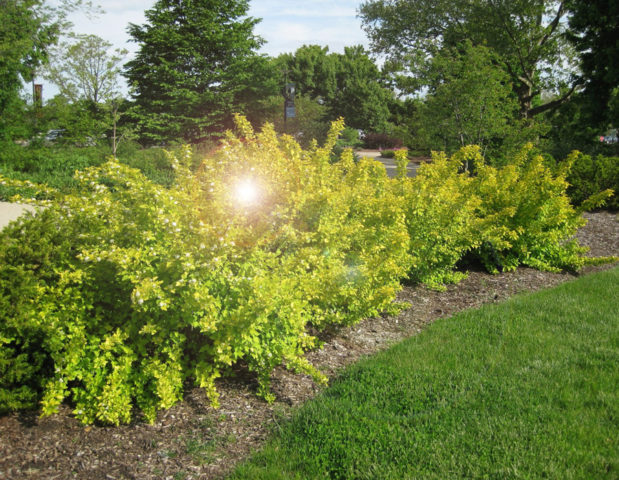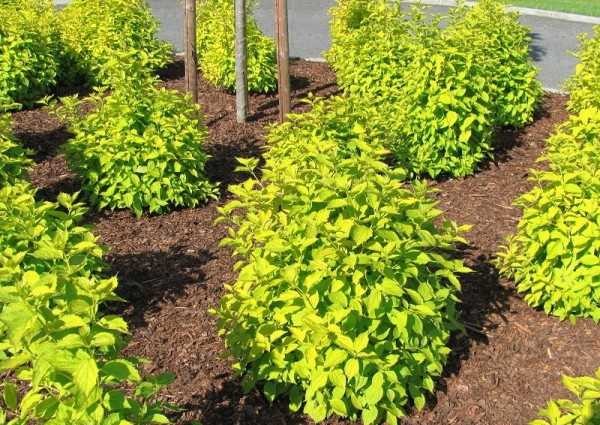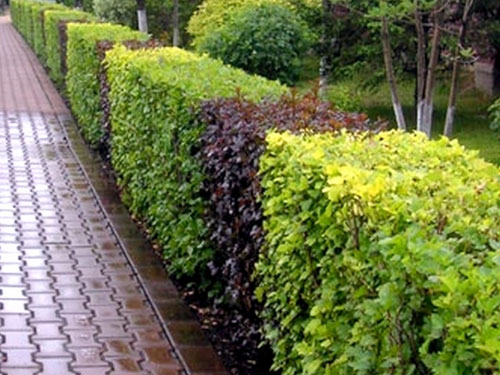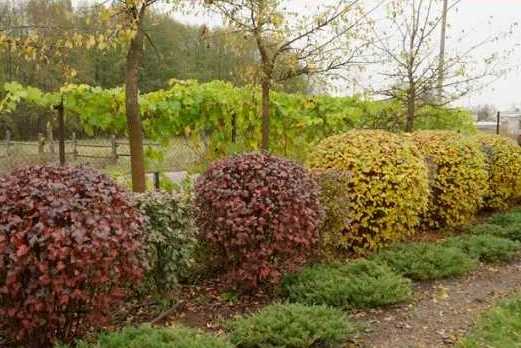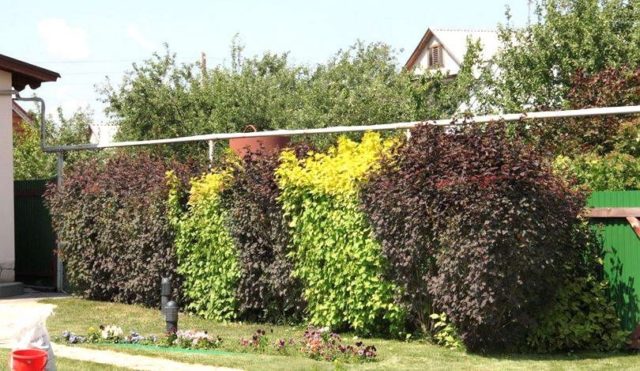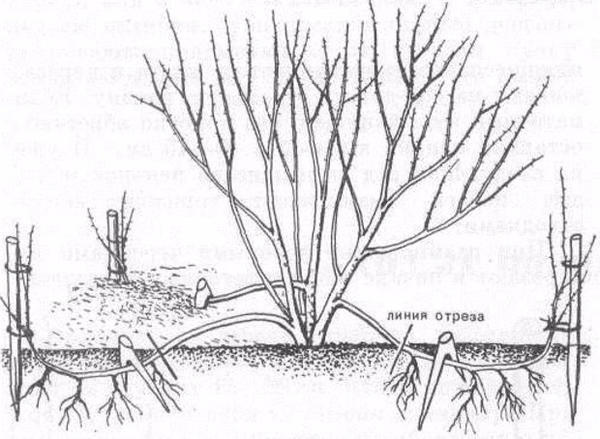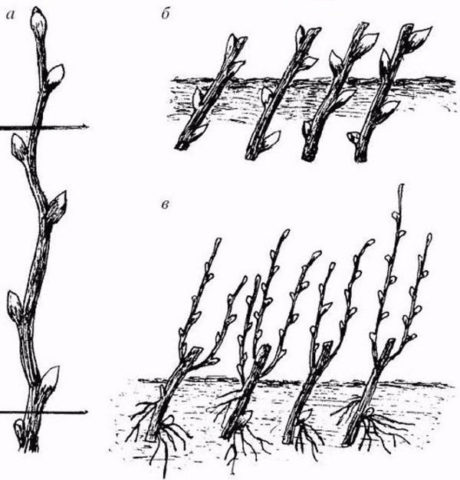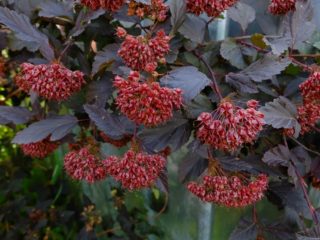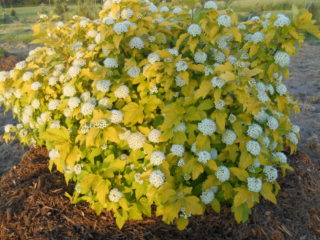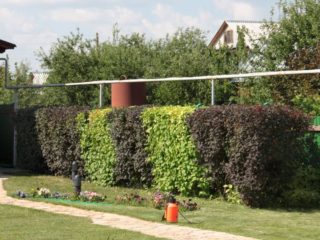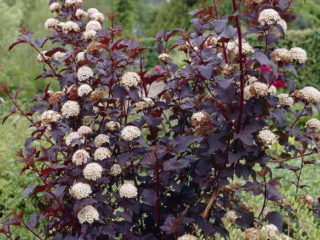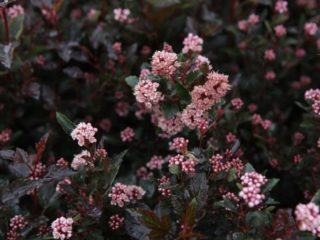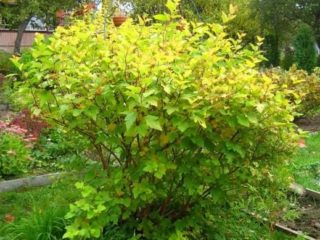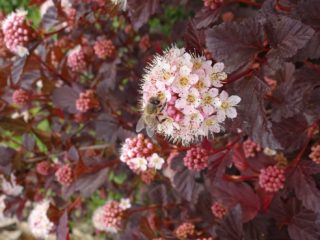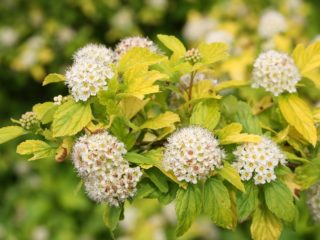Content
Among the wide variety of ornamental plants, a special place is occupied by the yellow bladder, appreciated by gardeners for its unpretentiousness and beautiful appearance. This plant has a spherical dense crown of spreading branches with large leaves forming a "lush cape". The culture belongs to perennial deciduous shrubs. The description of the variety indicates that the yellow bubblegum is unpretentious and does not require special conditions for planting and care. The shrub grows well in temperate and northern latitudes in sunny areas.
Bladder varieties with yellow leaves
There are many decorative varieties of the yellow bladder, which differ in the shape and color of the leaves, in size.
Darts Gold
The yellow bubblegum Darts Gold (pictured) was bred in Holland and is a hybrid of Nanus and Lueus varieties. The shrub grows up to 1.5 meters in height and is densely and evenly covered with pale yellow foliage. When blooming, the leaves are orange-yellow, in summer they are green, and in autumn they acquire a yellowish-red hue. In June, the crop is covered with cream flowers. The bicarp of this variety is not picky about soils and tolerates pruning well, therefore it is actively used for hedges both singly and in mixed perennial compositions.
Luteus (Aureus)
The yellow bubble plant Luteus (Aureus) (pictured) is a fast-growing seedling, reaching 3-3.5 m in height and up to 4 m in width. When blooming, the leaves have orange-yellow foliage, which turns green by summer, and in autumn they acquire a bronze color. The variety is not picky about soil and sun, resistant to diseases and pests, frost-resistant. Used to create compositions, in single plantings and in hedges.
Gold Spirit
Gold Spirit is a shrub that reaches a height of 2 m. Leaves are golden yellow throughout the season. Perfectly tolerates a haircut.
A photo of the bladder of the Kalinolist golden Spirit is presented below.
Amber Jubilee
Amber Jubilee is an unusually bright, colorful and compact bush, reaching 2 m in height and 1.5 m in width. The leaves at the edges of the branches are red-orange, and closer to the crown they acquire a yellowish-green hue with many transitions. It looks especially beautiful when planted in the sun. If the crop grows in the shade, the foliage loses its color intensity. The variety is frost-resistant. Used in hedges, both alone and in combination with other perennial shrubs.
Angel Gold
Angel Gold is a spreading bush up to 2 meters high. The leaves are the same shape as the Diablo variety. When blooming, the leaves are yellow, subsequently slightly greening, and by autumn they again acquire a yellow color. The flowers of the shrub are white.
Nugget
The Nugget variety was developed in the USA. The shrub grows up to 2.5 m in height. The leaves at the beginning of blooming are bright yellow, by the middle of summer they turn a little green, and by autumn they turn yellow again. The flowers of the shrub are creamy white with pinkish stamens.
Golden Nugget
The variety is distinguished by an intensively changing color of leaves throughout the season. It grows up to 2 m in height and up to 2 m in diameter.In spring, the leaves are golden yellow, turn green in summer, and turn yellow again in autumn. The flowers of the shrub are pinkish-white with a light, pleasant aroma. It grows well both in the sun and in shaded areas (only the color of the leaves changes to green).
Golden bubble in landscape design
The yellow bladderwort in Russia has been used as an ornamental plant since the middle of the 19th century and is widely used for landscape design: hedges, for dividing a site into zones, as well as for decorating borders. Looks great in both single and group plantings.
Due to the fact that the yellow bubblegum well tolerates gas pollution, it can often be found in city squares and parks. Even close to the road, the bushes will grow well and provide protection from exhaust gases and dust.
Due to the fact that the shrub perfectly tolerates pruning, there is the possibility of giving any shape (cylinder, ball, line).
The yellow bladder can be grown both in the sun and in partial shade or shade. To make the varieties of shrubs with golden, yellow and purple leaves look bright and beautiful, they are recommended to be planted in sunlit places.
When forming hedges, varieties with red (purple) and golden (yellow) leaves go well. And purple varieties will be an excellent backdrop for light perennial shrubs.
The yellow vesicle looks original next to coniferous shrubs, such as thuja and juniper.
For example, a greenish-yellow Darts Gold will look great in combination with a burgundy-bronze Red Baron or a golden Nugget with a purple Diable Door variety. These compositions can be planted alternating colors or parallel to each other.
For fencing a playground or separating the garden from the local area, such varieties of a low yellow bladder as Amber Jubilee or Darts Gold are perfect.
Planting and caring for the yellow bladder
The yellow vesicle is quite unpretentious, but there are some nuances of planting and caring for it. The duration of the vegetative period in this shrub reaches 40 years. With proper care, the seedling grows 40 cm in length and width in one year.
Landing site preparation
Like most plants, the yellow bubble plant likes well-lit areas, away from large trees. If it is planted in a semi-shaded or shaded place, then the color of the leaves takes on a green tint.
Bubble plant grows well on fertile, drained loamy soils with slightly acidic or neutral acidity.
It can be planted near roads, since the shrub can withstand air pollution and this is one of the advantages.
The shrub is planted in early autumn or early spring. If the seedlings have a closed root system, planting can be done at any time of the year (except for winter).
For planting a yellow vesicle, there are only two conditions for the soil - this is the presence of good drainage and the absence of lime in it.
In order for the earth to settle, you need to prepare a hole 0.5 m wide two weeks before planting and add a mixture of garden soil to it: turf soil, sand and peat, in a ratio of 2: 1: 1. Humus can be used instead of peat.
Landing rules
For planting a yellow bubble, it is recommended to purchase strong shrub seedlings with a closed root system in specialized organizations.
The seedling is carefully removed from the container, so as not to damage the root ball, placed in a prepared hole, deepening the seedling by 5 cm (this will make it possible to release additional shoots).
The pit is filled with fertile soil, after which it is watered with Kornevin's solution.When the solution leaves the surface of the earth, the place around the seedling is mulched so that a surface crust does not form and the roots receive the required amount of air.
For a hedge, you need to plant shrubs in a checkerboard pattern in two rows. The distance between the rows must be maintained at 35 cm, and 45 cm in the row.
Watering and feeding
The frequency of watering the yellow bladderworm depends on many factors: the age of the shrub, the type of soil, climatic conditions.
In hot climates, the shrub takes root well on light loamy soils. Watering is necessary regularly from late spring to early autumn. An adult shrub is watered twice a week using 40 liters of water. Watering the shrub is carried out directly under the plant in the morning or evening (after sunset).
If the yellow bubblegum is not mulched, then you need to loosen the soil after watering.
When growing shrubs on lawns or on clay soil, there is a danger of waterlogging and infection with powdery mildew.
In early spring and late autumn, you need to feed the vesicle. If the shrub grows on fertile soil, then additional fertilization is not needed. 2-3 years after planting, the crop is fed twice a year. In early spring, fertilize with mullein solution. For 10 liters of water, 0.5 liters of mullein, 15 g of carbamide (urea) or 20 g of ammonium nitrate (per bush) are required. A ten-year-old yellow bladderworm will need 15 liters of nutrient solution.
In the fall, they are fed with a solution of nitroammophoska at the rate of 30 g per 10 l of water. 10-15 liters of solution are applied under each bush.
Pruning
The yellow bicarp is pruned for sanitary purposes and to form a beautiful bush. Sanitary pruning is carried out in the spring: dried, frozen and growing branches are removed.
Formative pruning can be done in the spring, after flowering, or in the fall, after stopping the growing season.
There are two cropping options:
- to get a powerful and wide shrub with a large number of trunks, pruning is carried out at a height of 0.5 m from the soil and half of the entire length of the growth is removed;
- in the second option, all thin shoots at the base of the bush are cut off, leaving up to 5 of the most powerful ones.
The hedge must be trimmed several times during the growing season. The first procedure is carried out in early spring before the beginning of the active budding phase.
Once every five years, the plant requires anti-aging pruning, which consists in getting rid of all old shoots to the very base. After this procedure, all thick shoots are treated with garden pitch.
Preparing for winter
The yellow bicarp has excellent frost resistance, so an adult shrub can hibernate without shelter. Young seedlings, which were pruned and fed in the fall, are covered with spruce branches.
If a frosty winter is expected, then the vesicle is carefully pulled together with twine and insulated with a roofing material cap.
Reproduction
The yellow vesicle reproduces in several ways: by seeds, dividing the bush, layering and cuttings.
Reproduction by dividing the bush
Experienced gardeners say that dividing a bush is the easiest way. The procedure is carried out in spring or autumn. To do this, an adult shrub is dug up and divided into parts so that each of them has a root system and several shoots. To prevent the root system from drying out, it is recommended to immediately plant the resulting bushes in pre-prepared pits.
Seed propagation
When propagated by seed, the shrub will have classic characteristics without repeating the decorative features of the parent plant.
For a month, the seeds are kept at a certain temperature (stratified). Then they are planted in open ground. When the seedlings grow up a little, they are transplanted to a permanent place.
Reproduction by layering
Reproduction of the yellow vesicle by layering has shown good results and is widely used by gardeners.
This procedure is carried out at the beginning of spring, so that the layers take root before the onset of winter. For the cut, a healthy, strong shoot is chosen that grows outward. Remove all leaves except those at the top. The shoot is placed in a hole 15 cm deep and pinned to the ground with a wooden bracket.
At the end of autumn, young cuttings are separated from the mother plant and prepared for winter as described above.
You can use another method. To do this, bend the lower branch to the ground, fix it with a slingshot and prop the top. The final transplant is carried out only next spring.
Propagation by cuttings
When multiplying the yellow vesicle by cuttings, young green shoots that have grown in the current year are used. In the spring, before flowering, shoots 10-20 cm in length with 3-4 buds are chosen and cut at an angle of 45 °, the lower leaves are removed. The separated shoots are soaked for a day in a solution of Kornevin or Heteroauxin, which promotes root formation. Then they are planted in a substrate of sand with peat or simply in river sand. Water the cuttings and cover with polyethylene. If there are few cuttings, you can use plastic bottles without a neck for shelter.
Further care consists in timely moistening of the soil and systematic ventilation. Rooted cuttings are covered before the beginning of winter. In the spring, cuttings can be planted in a permanent place.
Diseases and pests
The yellow bladderworm is resistant to diseases and pests. Since the shrub does not like waterlogging, with excessive water application, powdery mildew may develop, which leads to the death of the seedling.
Due to a lack of nutrients (iron, magnesium), chlorosis may develop, which is characterized by yellowing and drying of young shoots unusual for the variety. To get rid of the problem, it is enough to spray the plant with iron and manganese preparations (Antichlorosis, Chelate, Ferrilene, Ferovit) at the root.
Conclusion
The yellow bubblegum is an unpretentious shrub that will decorate the garden from spring to late autumn. It will be an element of landscape design, allowing you to give the site a well-kept look.
